Lymphedema is swelling caused by non-physiological lymphatic stasis. It may have varying degrees of severity. Typically, the lymphatic fluid eliminates unnecessary substances from the tissues. Disturbance in the functioning of lymphatic vessels causes these substances to remain in the tissues.
In the initial phase of the disease, the body tries to cope with the problem by increasing lymph production – this is the so-called latent stage. Unfortunately, after some time, the body's compensatory mechanisms are exhausted. That is why the unremoved substances cause the appearance of slight swelling – this is the first stage of lymphedema. Over time, the symptoms worsen, and the swelling hardens.
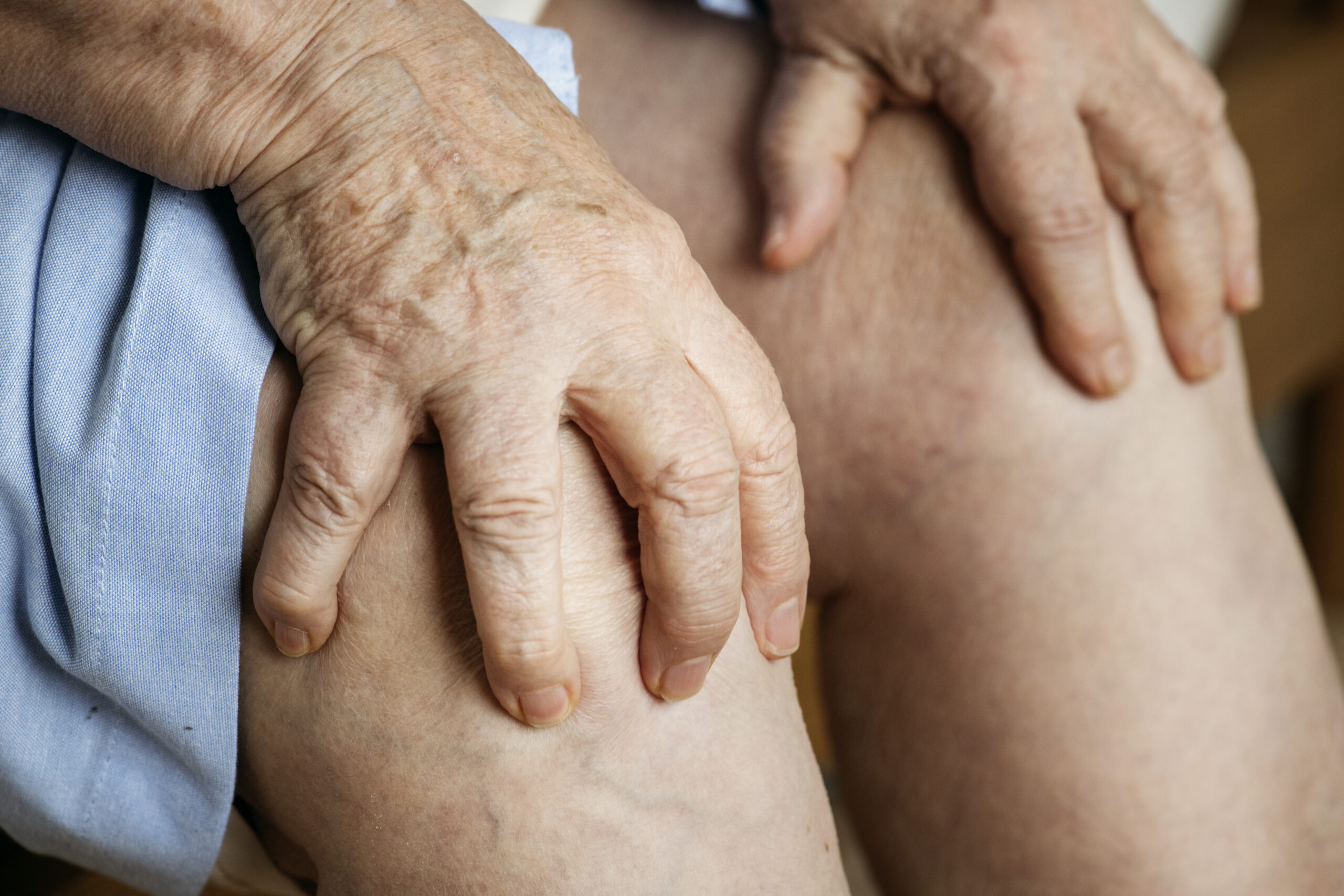
The lymphatic system![]() consists of lymphatic vessels, the thymus gland, tonsils, lymph glands, and lymph nodes. These organs produce cells called lymphocytes
consists of lymphatic vessels, the thymus gland, tonsils, lymph glands, and lymph nodes. These organs produce cells called lymphocytes![]() , which are part of the lymph and flow through lymphatic vessels into the blood.
, which are part of the lymph and flow through lymphatic vessels into the blood.
Lymphatic capillaries are blind-ended vessels that join together to form larger vessels. Small and medium-sized lymphatic vessels drain into larger and larger ducts, most of which drain into the thoracic and accessory thoracic ducts. Both tubes connect to the veins. It means that the lymphatic system is connected to the circulatory system. At the blind ends of lymphatic capillaries, there are large holes. They facilitate the passage of fluid, proteins, and large molecules from the interstitial space. In this way, lymph is created, i.e., the fluid circulating in the lymphatic system.
The primary function of lymphatic circulation is the absorption and drainage of intercellular fluid and the response to infections – lymph contains the immune system cells.
The most common disorder of the lymphatic system is lymphedema![]() . In most cases, it affects the lower limbs. The typical symptom is painless swelling, which is the so-called doughy – persists for some time after pressing the skin (you can check this by pressing the swelling with your fingertip; after removing your finger, a dimple will be visible).
. In most cases, it affects the lower limbs. The typical symptom is painless swelling, which is the so-called doughy – persists for some time after pressing the skin (you can check this by pressing the swelling with your fingertip; after removing your finger, a dimple will be visible).
There may be many causes of lymphedema. Its absorption may be inhibited, and lymphatic vessels may be missing (congenital hypoplasia, surgical removal) or blocked. That is why we divide this condition into primary and secondary.
Primary lymphedema![]() most often occurs in people whose lymphatic vessels have developed incorrectly or have become closed. This swelling type may occur in rare genetic diseases, such as congenital lymphedema type I or II.
most often occurs in people whose lymphatic vessels have developed incorrectly or have become closed. This swelling type may occur in rare genetic diseases, such as congenital lymphedema type I or II.
Secondary lymphedema![]() is an acquired condition resulting from damage to a previously functioning lymphatic vessel. It may be caused by acute inflammation of the lymphatic vessels. This disease occurs due to skin infection with bacteria (most often streptococci). Linear redness is visible on the skin along the affected lymphatic vessel, the so-called red stripe. The changes are accompanied by severe pain. These ailments disappear as the bacterial infection is fought.
is an acquired condition resulting from damage to a previously functioning lymphatic vessel. It may be caused by acute inflammation of the lymphatic vessels. This disease occurs due to skin infection with bacteria (most often streptococci). Linear redness is visible on the skin along the affected lymphatic vessel, the so-called red stripe. The changes are accompanied by severe pain. These ailments disappear as the bacterial infection is fought.
Other causes of secondary lymphedema include Filariasis (infection with a parasite found in tropical countries), chronic recurrent inflammatory diseases (e.g., erysipelas, tuberculosis), some cancers, and rheumatoid arthritis. Lymphatic edema may also appear after surgery or radiotherapy for cancer (breast, reproductive organs, and others), as well as after vascular surgery, after injuries, and in people with chronic venous insufficiency (then the edema is venous-lymphatic).
Additionally, there is idiopathic secondary lymphedema![]() accompanying obesity and gigantic and massive fatty edema. Sometimes, lymphedema may be a symptom of lymph node involvement by a cancer process (malignant lymphedema
accompanying obesity and gigantic and massive fatty edema. Sometimes, lymphedema may be a symptom of lymph node involvement by a cancer process (malignant lymphedema![]() ).
).
Lymphedema may worsen during pregnancy. In most patients, it decreases after delivery to its pre-pregnancy size.
Lymphedema resulting from the removal of lymph nodes (e.g., due to cancer) or infection usually develops after a latency period of several months or even many years. Initially, it is doughy and susceptible to pressure, but it usually hardens over time. In people with damage to the lymphatic system, the so-called proximal, i.e., on the limbs closer to the torso than to the feet or hands, swelling, especially in the early phase, may only affect the part of the limb closer to the torso and the adjacent area of the torso (e.g., arm, breast, thigh, or external genital organs).
Symptoms![]() typical of lower limb lymphedema include hardening of the front of the foot and the base of the second toe, preventing the skin from being caught in a fold, and swelling of the toes (so-called “sausage toes”). As the swelling increases, the tendency to recurrent bacterial infections of the skin and subcutaneous tissue increases. Gradually, significant deformation of the affected limb may occur (elephantiasis). It is accompanied by a chronic feeling of heaviness in the limbs.
typical of lower limb lymphedema include hardening of the front of the foot and the base of the second toe, preventing the skin from being caught in a fold, and swelling of the toes (so-called “sausage toes”). As the swelling increases, the tendency to recurrent bacterial infections of the skin and subcutaneous tissue increases. Gradually, significant deformation of the affected limb may occur (elephantiasis). It is accompanied by a chronic feeling of heaviness in the limbs.
Longer-lasting swelling leads to deformation of body parts, destruction of lymphatic vessels, fibrosis, and reactive skin changes. This condition is called elephantiasis![]() .
.
The diagnosis of lymphedema![]() is based on the clinical picture – the doctor first takes a detailed history and then examines the swelling. It is necessary to determine the cause of the swelling.
is based on the clinical picture – the doctor first takes a detailed history and then examines the swelling. It is necessary to determine the cause of the swelling.
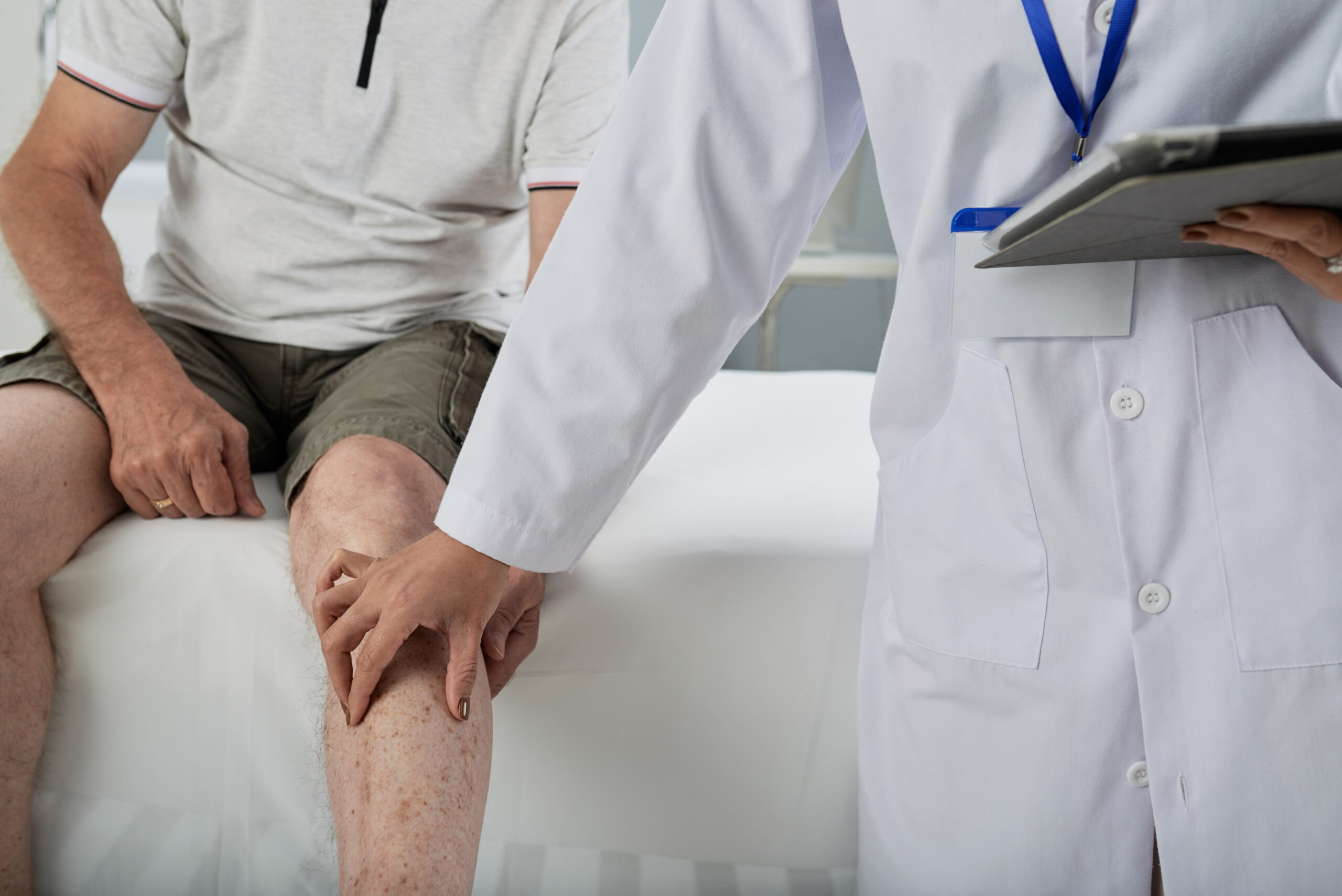
If necessary, the specialist performs lymphoscintigraphy![]() to diagnose lymphedema. During this process, a substance is administered subcutaneously to be found in the lymphatic system, and then an examination is performed with a gamma camera.
to diagnose lymphedema. During this process, a substance is administered subcutaneously to be found in the lymphatic system, and then an examination is performed with a gamma camera.
To exclude other diseases, it may be useful to perform imaging tests – magnetic resonance imaging (MRI) or computed tomography (CT). Laboratory tests may also be helpful primarily to exclude or confirm comorbidities.
Determining the cause of lymphedema is crucial because it is often a secondary symptom of the underlying disease, and its treatment causes the swelling to subside.
Conservative treatment![]() of lymphedema is long-term, often costly for patients, and requires close, long-term cooperation with therapists to maintain the improvement achieved, therefore, prevention is significant. There is an urgent need to create a national preventive program, including periodic monitoring of limb size in people at risk of lymphedema, enabling early diagnosis of the disease in a transient stage, and initiation of physiotherapy.
of lymphedema is long-term, often costly for patients, and requires close, long-term cooperation with therapists to maintain the improvement achieved, therefore, prevention is significant. There is an urgent need to create a national preventive program, including periodic monitoring of limb size in people at risk of lymphedema, enabling early diagnosis of the disease in a transient stage, and initiation of physiotherapy.
Compression therapy![]() , using both bandaging and the use of compression products with different pressures, remains an integral part of physiotherapeutic treatment in people at risk and at all levels of advancement of lymphedema, regardless of its etiology. Kinesiology taping
, using both bandaging and the use of compression products with different pressures, remains an integral part of physiotherapeutic treatment in people at risk and at all levels of advancement of lymphedema, regardless of its etiology. Kinesiology taping![]() (KT) is increasingly used among physiotherapeutic methods.
(KT) is increasingly used among physiotherapeutic methods.
Promoting knowledge about the prevention of lymphedema, which includes proper skin and nail care, maintaining appropriate body weight, and understanding of triggering factors (injuries, inactivity and excessive physical exercise, overweight and especially obesity) is a task that should be carried out before treatment impairing lymph outflow and continued after its completion in oncology centers and rehabilitation clinics.
The specialists often recommend physiotherapy as the primary treatment method. It includes lymphatic drainage techniques![]() , compression bandaging, and decompressive gymnastics
, compression bandaging, and decompressive gymnastics![]() . It causes a significant reduction in swelling in most patients.
. It causes a significant reduction in swelling in most patients.
The success of therapy is determined by early diagnosis and implementation of treatment based on elements of comprehensive physiotherapy. It is performed in two stages: the first intensive (early), usually lasting 2-4 weeks and aimed at quickly reducing the size of the swelling, mainly by removing the fluid accumulated in the subcutaneous space, and the second, following the early stage, a supportive treatment lasting for the rest of life, the aim of which is to maintain the previously achieved improvement.
The effectiveness of the first stage of therapy is mainly influenced by the selection of the most effective physiotherapy methods. The second stage is often more difficult for patients because it requires self-discipline in systematically implementing the received therapeutic recommendations.
Compression is an essential element of CPT in the form of multi-layer bandaging around the clock in the first phase of treatment and wearing compression products during the day; in the second phase, combined with physical exercises, effectively reduces and allows for permanent maintenance of the improvement achieved. However, kinesiotaping will not replace standard bandaging in treating more advanced forms of lymphedema.
Contraindications to the use of physiotherapy in lymphedema include acute inflammation of the skin and subcutaneous tissue, recent deep vein thrombosis of the lower limbs, and decompensated congestive heart failure. Pneumatic massage![]() can be a supporting method. After completing the initial intensive treatment, patients must wear stockings, compression sleeves of appropriate compression, or non-elastic compression stockings during the day and, in many cases, bandage the limb at night.
can be a supporting method. After completing the initial intensive treatment, patients must wear stockings, compression sleeves of appropriate compression, or non-elastic compression stockings during the day and, in many cases, bandage the limb at night.
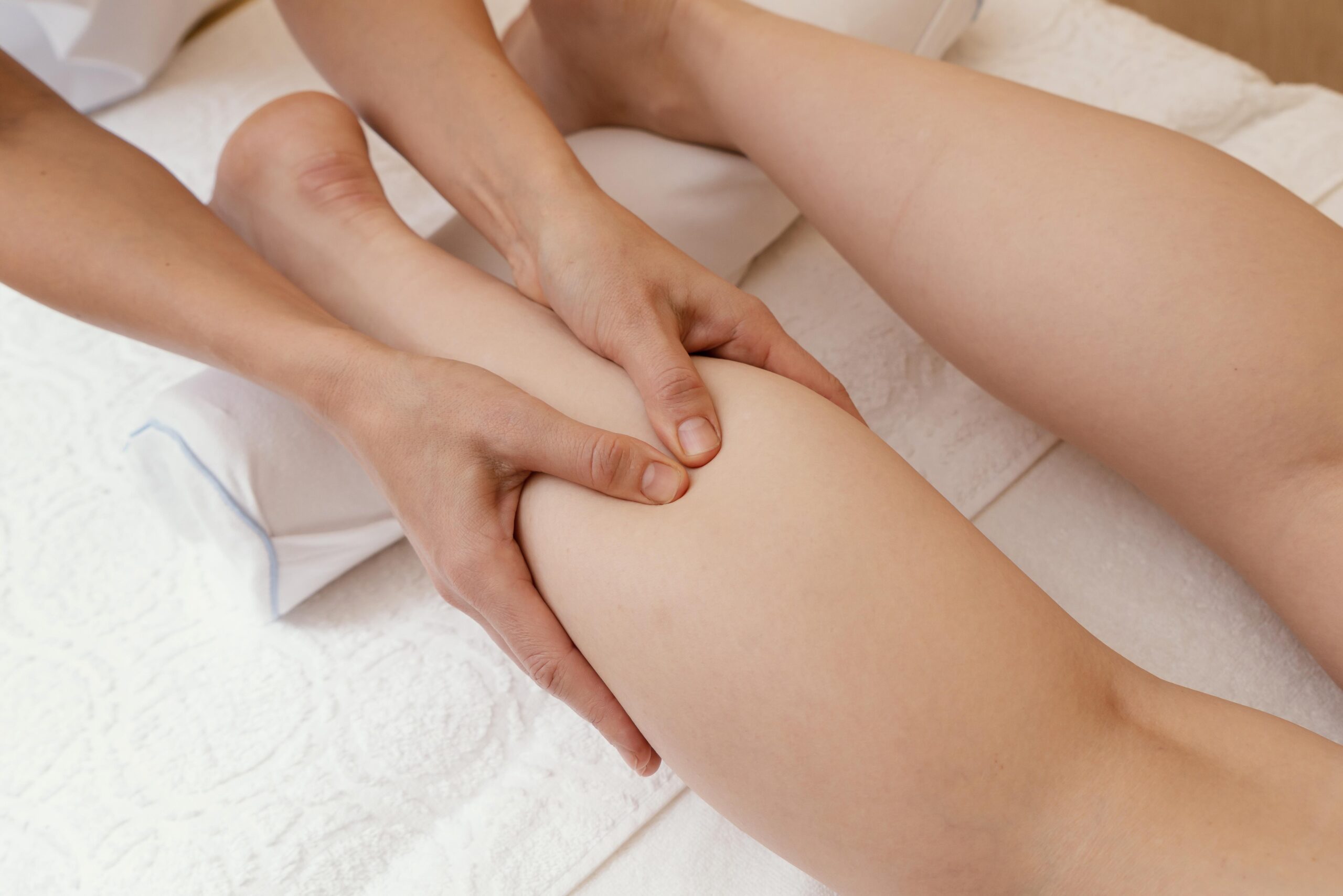
Radical surgical treatment![]() , which involves the removal of hypertrophic and swollen subcutaneous tissue, is rarely used, usually in cases of advanced edema with significant functional impairment. Sometimes, in people with lymphedema of the external genital organs impairing urination, in patients with lymphedema of the head disturbing vision, as well as in cases of advanced lymphedema of the limbs with significant deformation. There is a major risk of skin necrosis. The doctors only consider surgery in patients in whom physiotherapy has not brought improvement.
, which involves the removal of hypertrophic and swollen subcutaneous tissue, is rarely used, usually in cases of advanced edema with significant functional impairment. Sometimes, in people with lymphedema of the external genital organs impairing urination, in patients with lymphedema of the head disturbing vision, as well as in cases of advanced lymphedema of the limbs with significant deformation. There is a major risk of skin necrosis. The doctors only consider surgery in patients in whom physiotherapy has not brought improvement.
Microsurgical procedures are also used to create lymphatic-venous connections. They are effective in preventing lymphedema of the upper limbs in women treated for breast cancer during the removal of axillary lymph nodes and also if performed in the early stages of swelling.
Specialists use a modified liposuction technique![]() to treat lymphedema of limbs that cannot be treated non-surgically. Liposuction allows you to reduce the limb volume quickly. After the procedure, it is necessary to constantly use compression sleeves or stockings with a high degree of compression.
to treat lymphedema of limbs that cannot be treated non-surgically. Liposuction allows you to reduce the limb volume quickly. After the procedure, it is necessary to constantly use compression sleeves or stockings with a high degree of compression.
Treatment depends on the cause of the swelling. When it is a symptom of another disease (e.g., infectious diseases), it disappears after the underlying disease is cured. In other cases of swelling, for example, if it is the result of cancer treatment, therapy is more challenging.
Lymphedema is usually a chronic disease. Correct and systematic treatment reduces swelling and controls the volume of the limb in most patients but requires constant wearing of compression stockings or sleeves and repeated sessions of comprehensive lymphatic therapy. Primary or congenital lymphedema may significantly impair the patient's quality of life but does not affect life expectancy.
To effectively prevent lymphedema![]() , it is best to follow the rules below:
, it is best to follow the rules below:
Cellulitis![]() is an inflammation of the skin and subcutaneous tissue caused by bacteria. Most often, they enter the body through wounds in the skin, e.g., stab wounds or other traumatic breaks in the continuity of the skin. It differs from lymphedema in that the skin is very red, sometimes even purple, tender, and painful. Initially, the patient may experience headache, nausea, and fever. Cellulitis can sometimes reach deeper into the tissues, even to the lymph nodes. Treatment involves antibiotic therapy.
is an inflammation of the skin and subcutaneous tissue caused by bacteria. Most often, they enter the body through wounds in the skin, e.g., stab wounds or other traumatic breaks in the continuity of the skin. It differs from lymphedema in that the skin is very red, sometimes even purple, tender, and painful. Initially, the patient may experience headache, nausea, and fever. Cellulitis can sometimes reach deeper into the tissues, even to the lymph nodes. Treatment involves antibiotic therapy.
Cellulite![]() is a disease called lipodystrophy
is a disease called lipodystrophy![]() . Lipodystrophy involves local or general loss of fatty tissue, i.e., its abnormal distribution. It affects women more often; most people associate it with the “orange peel skin.” It is usually located in the hips, abdomen, arms, and buttocks. The literature distinguishes two types of cellulite – hard cellulite and soft cellulite. An additional classification also considers edematous cellulite, water cellulite (which appears when you squeeze the skin, revealing an uneven surface and swollen parts), and fatty cellulite (depressions, nodules, and lumps are visible on the subcutaneous tissue).
. Lipodystrophy involves local or general loss of fatty tissue, i.e., its abnormal distribution. It affects women more often; most people associate it with the “orange peel skin.” It is usually located in the hips, abdomen, arms, and buttocks. The literature distinguishes two types of cellulite – hard cellulite and soft cellulite. An additional classification also considers edematous cellulite, water cellulite (which appears when you squeeze the skin, revealing an uneven surface and swollen parts), and fatty cellulite (depressions, nodules, and lumps are visible on the subcutaneous tissue).
Cellulite is formed as a result of excessive accumulation in the intercellular space. It causes swelling of the subcutaneous tissue and changes in tissue microcirculation. Several aesthetic medicine treatments treat cellulite, including needle mesotherapy, liposuction, and lymphatic drainage. It is a common symptom of diseases such as insulin resistance, hyperinsulinism, glucose intolerance, type 2 diabetes, as well as hypertriglyceridemia.
Another condition associated with lymphedema is lipoedema![]() . It is characterized by a bilateral increase in fat tissue from the waist to the ankles. This disease affects adult women. It is believed that the causes are hormonal disorders (menopause) and genetic predispositions. Lipedema is initially manifested by decreased skin tension and small nodules felt under the skin, which grow over time. Advanced stages of the disease may lead to limb deformation and secondary lymphedema due to blocked lymphatic vessels.
. It is characterized by a bilateral increase in fat tissue from the waist to the ankles. This disease affects adult women. It is believed that the causes are hormonal disorders (menopause) and genetic predispositions. Lipedema is initially manifested by decreased skin tension and small nodules felt under the skin, which grow over time. Advanced stages of the disease may lead to limb deformation and secondary lymphedema due to blocked lymphatic vessels.
Table of Contents
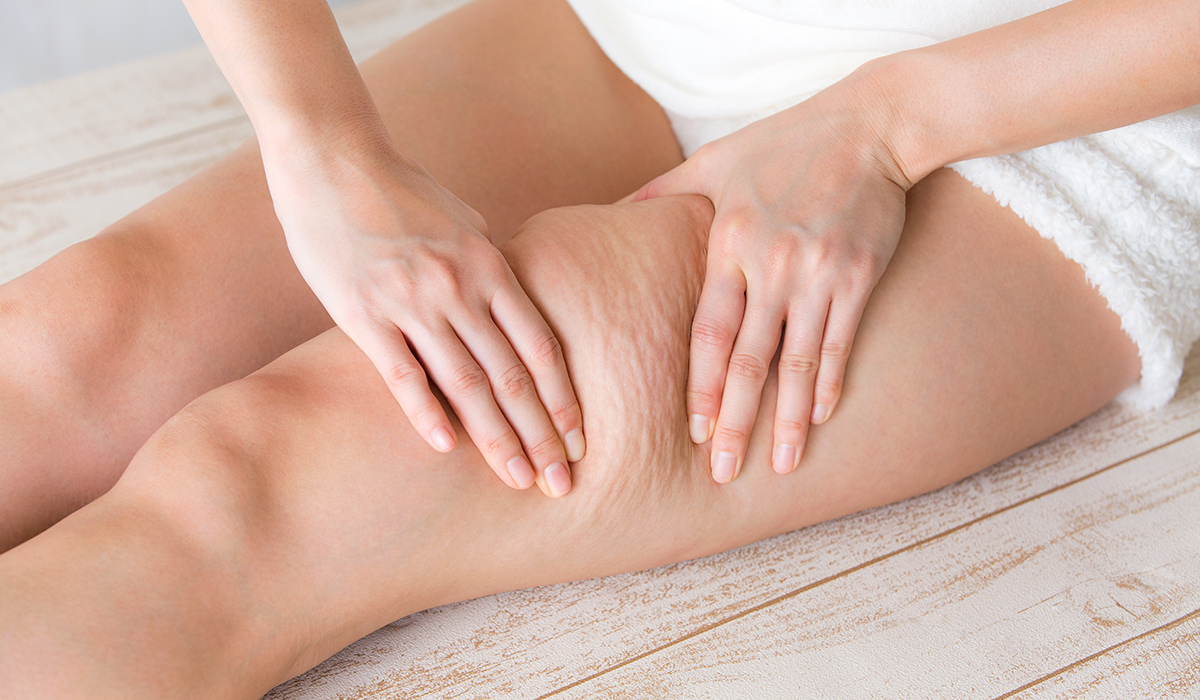
Cellulite is an abnormal distribution of adipose tissue, leading to changes in the subcutaneous tissue. Why is this happening? How… read more »
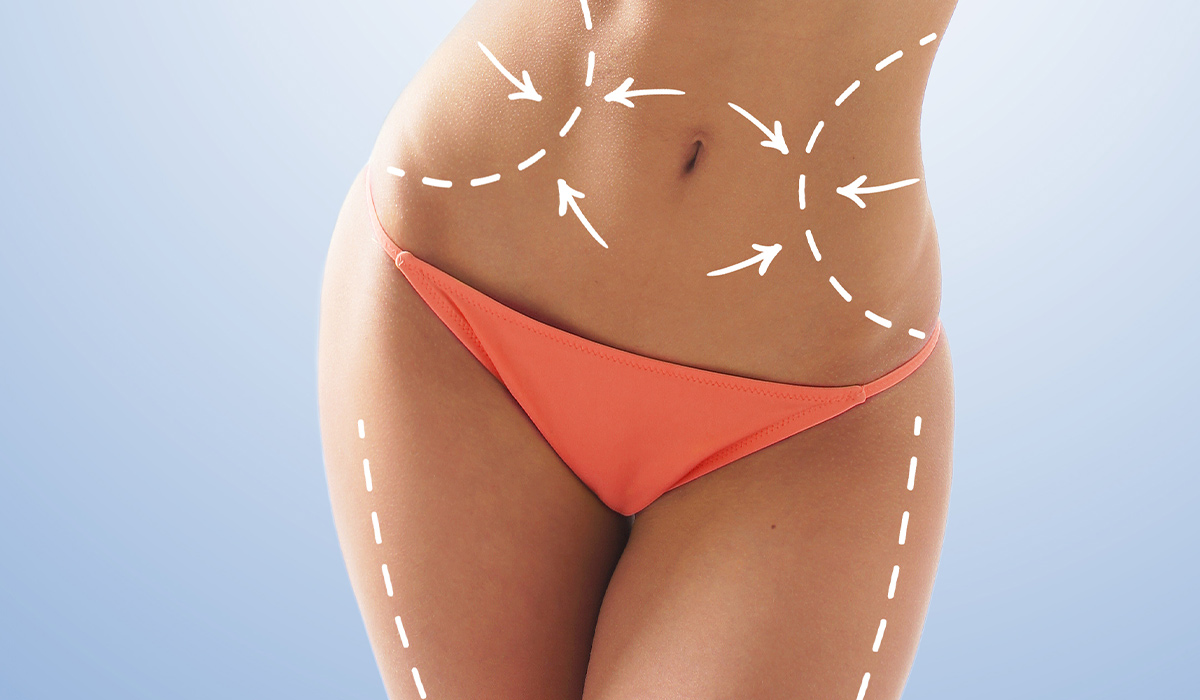
Cellulitis is an inflammation of the connective tissue that affects the skin and subcutaneous tissue. It is not the same… read more »
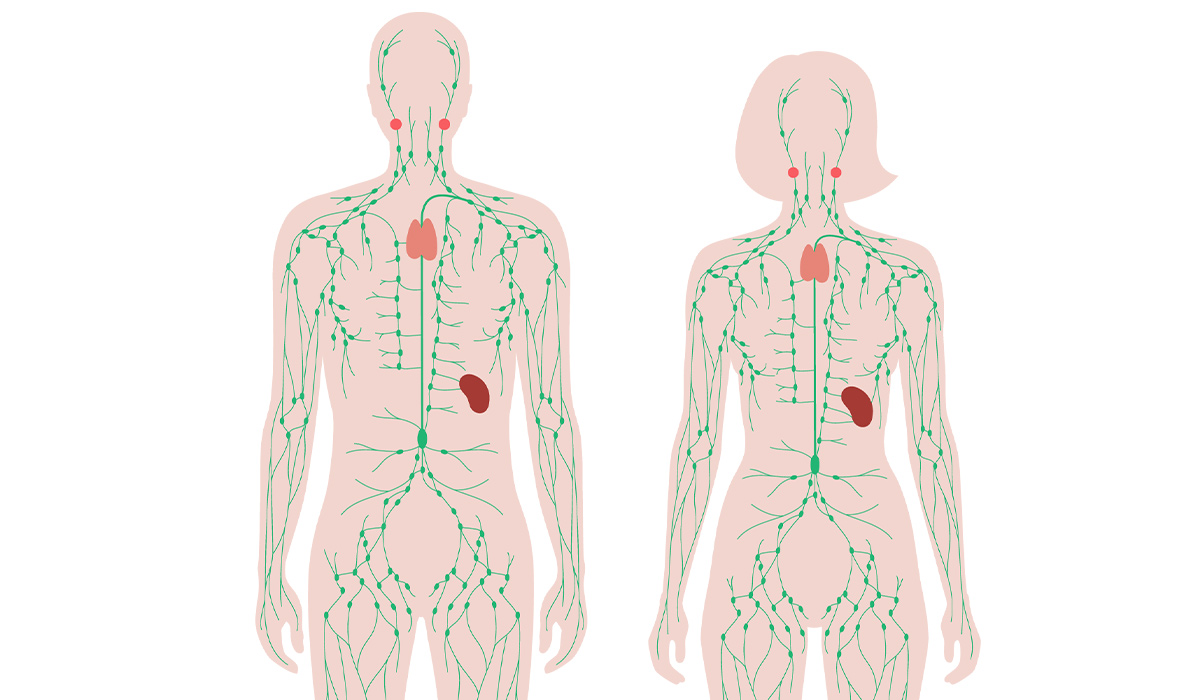
The human lymphatic system is an important support for the immune, circulatory and even digestive systems. What are its functions?… read more »
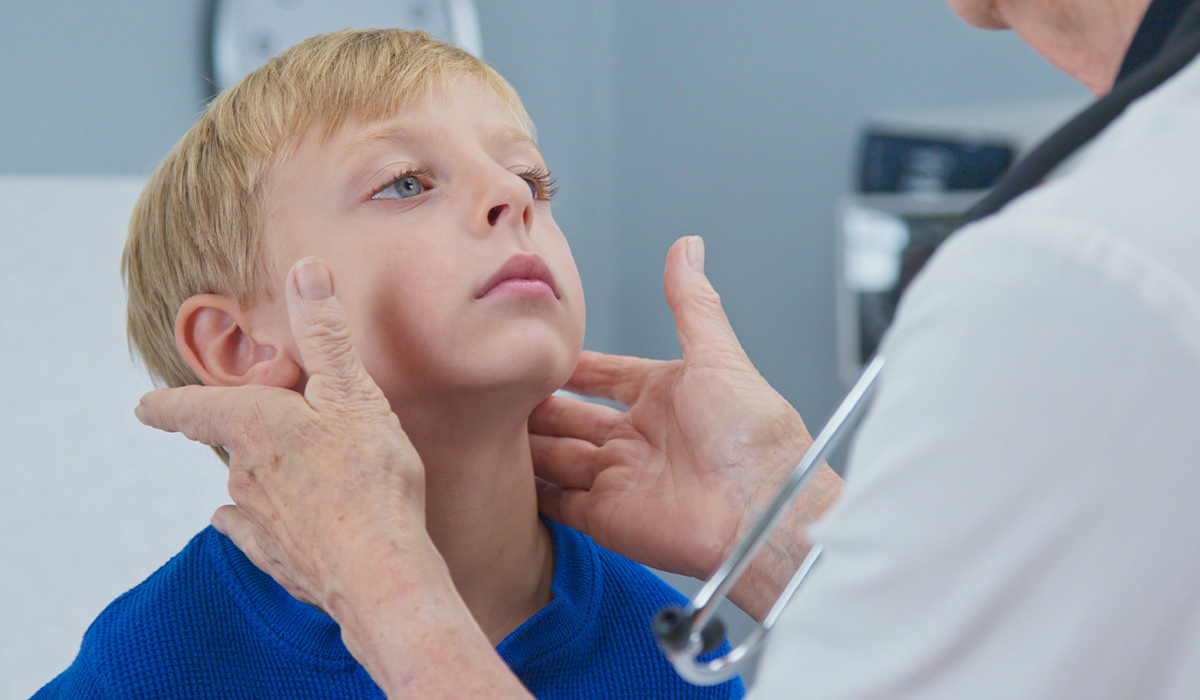
Swollen lymph nodes often occurs as a result of upper respiratory tract infections or infectious diseases. What are the symptoms?… read more »
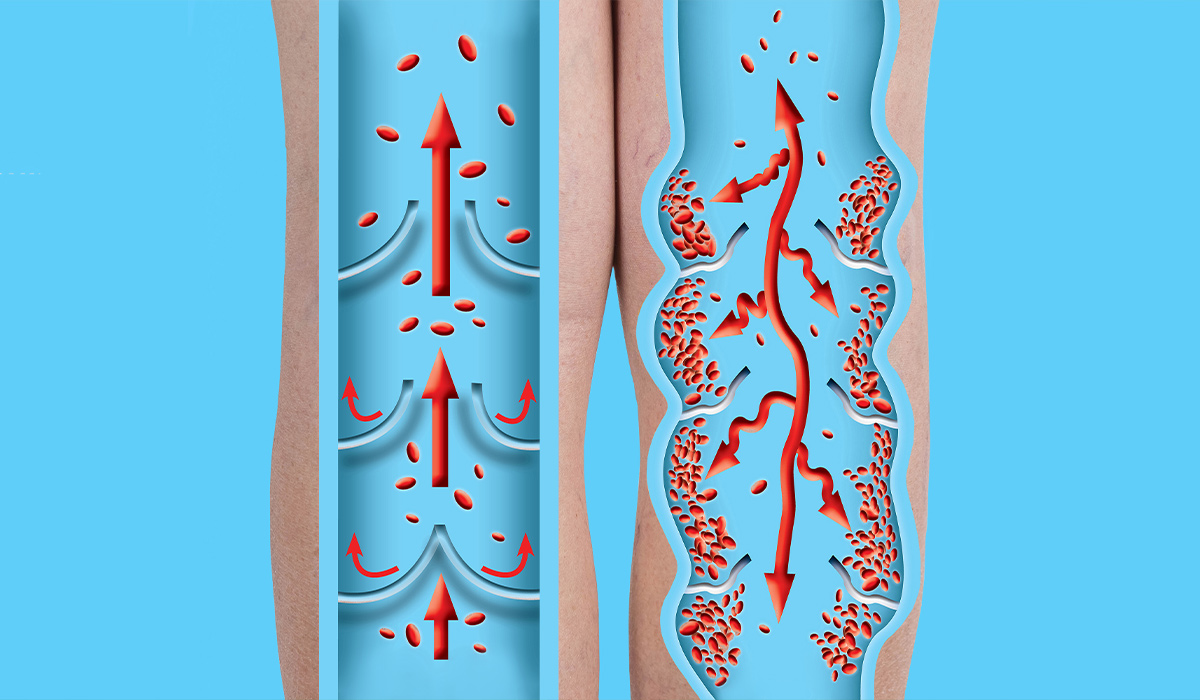
Do you know what are the symptoms of edema? How is it treated? Do you need a special diet if… read more »
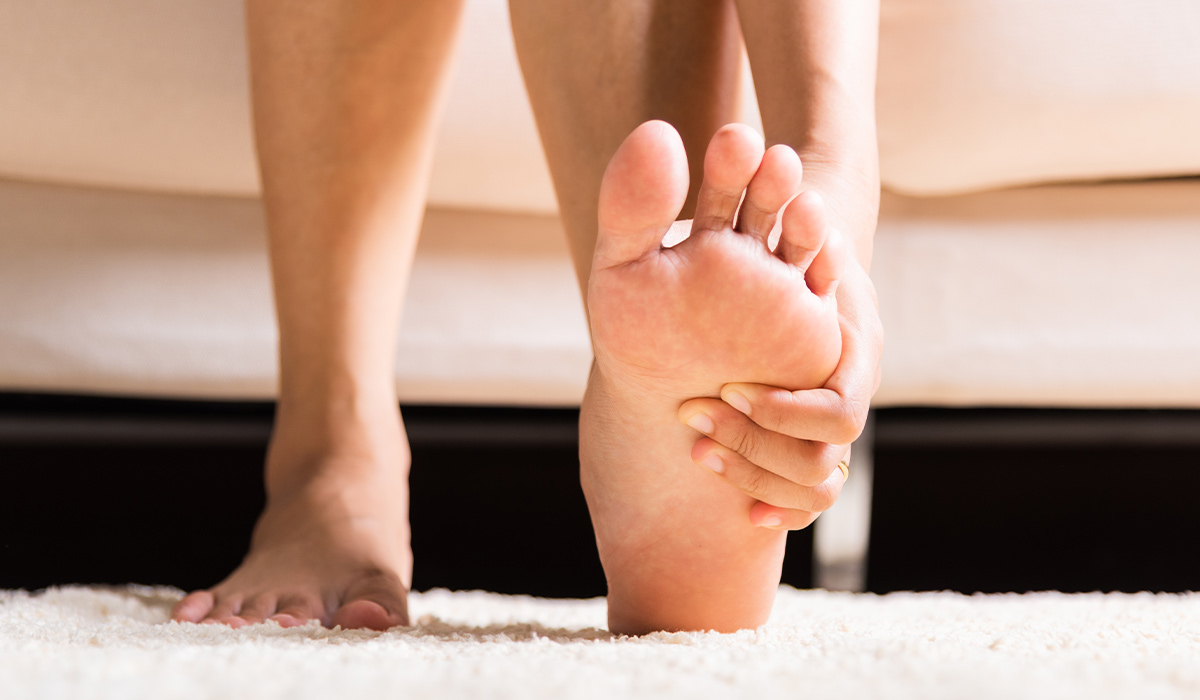
Swollen feet is an outward sign of fluid accumulation in the body. It can be a symptom of serious health… read more »
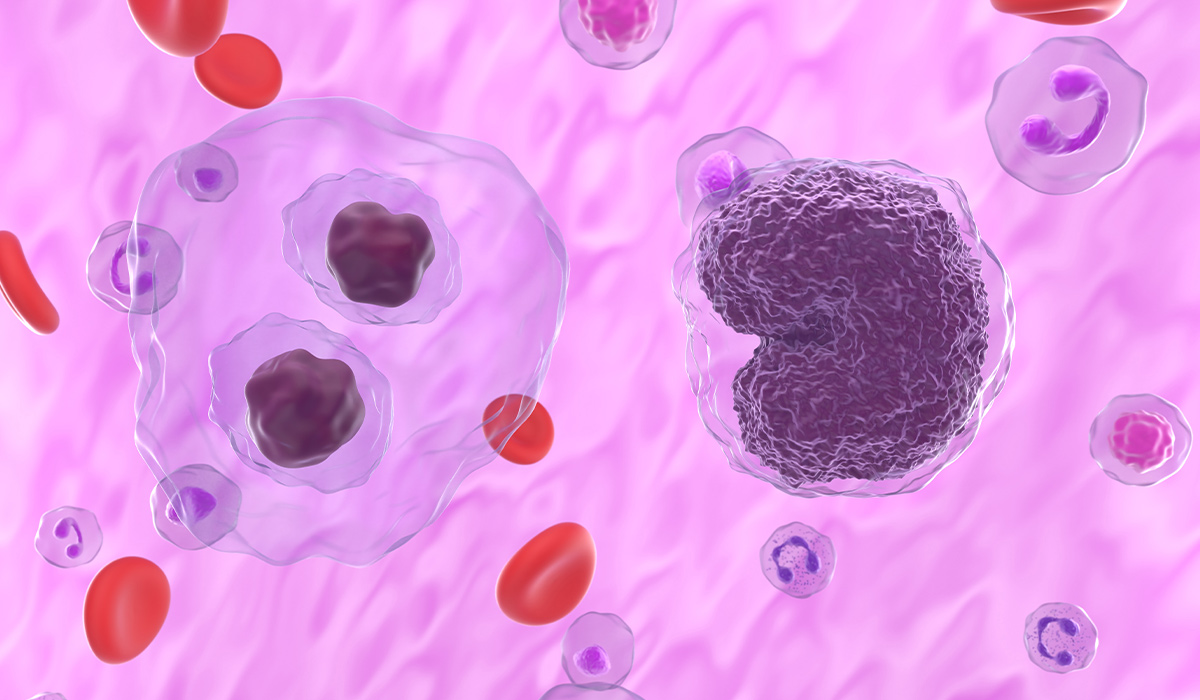
Lymphoma is a cancer of the lymphatic system. It is formed from lymphocytes – white blood cells. What are the… read more »

Vasovagal syncope is a loss of consciousness that occurs due to brief and temporary hypoxia of the brain. Learn about… read more »
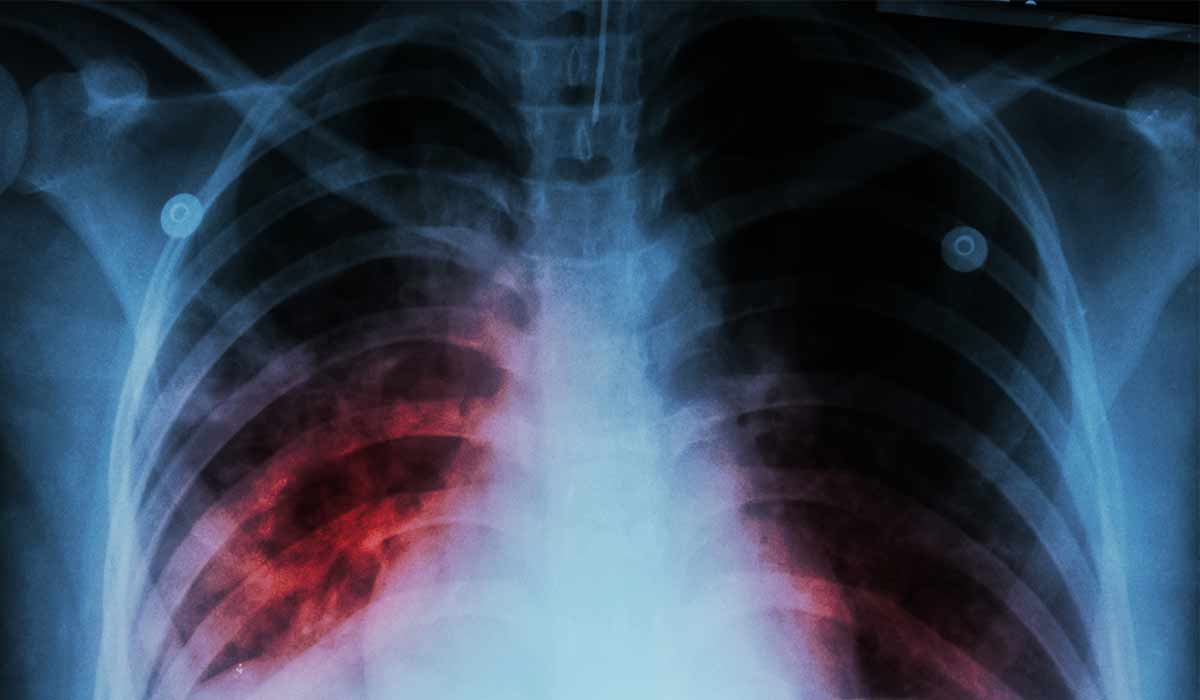
Tuberculosis is an infectious disease caused by mycobacteria. There are many types of tuberculosis with varying symptoms. Learn it all… read more »